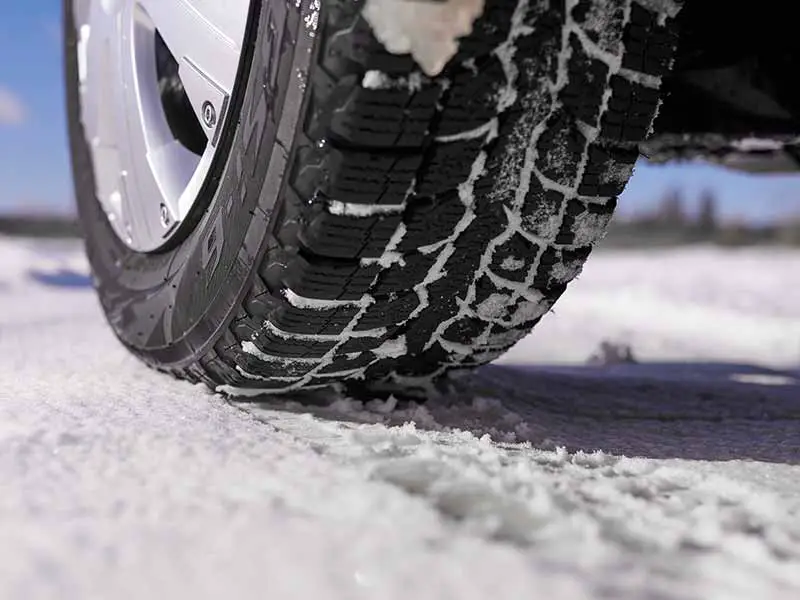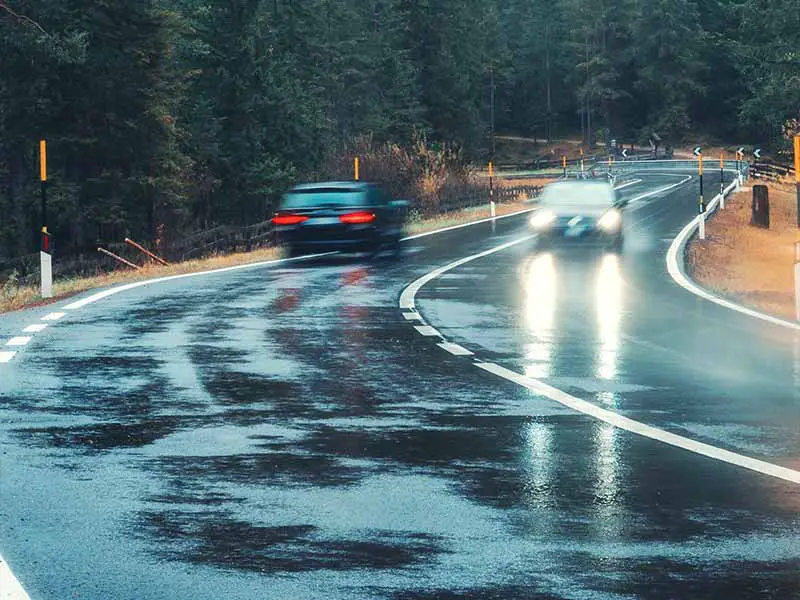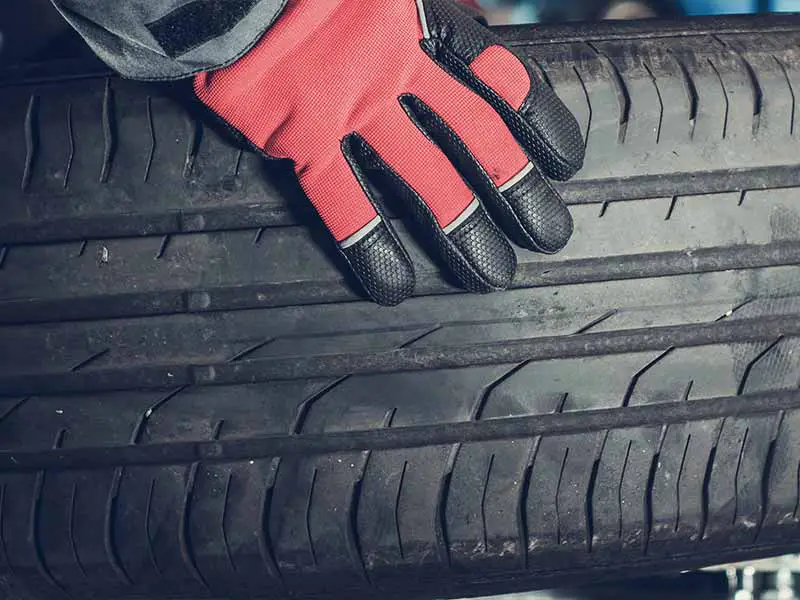Choosing the right tires for your vehicle is more than just a purchase; it’s an investment in your safety and driving experience. Ever wondered what “A/S” on a tire means, or how it stacks up against “regular” tires? You’re not alone, and the answers could make a world of difference on your next drive.
A/S Tires Meaning
A/S stands for All-Season, indicating that the tire is designed to perform well year-round in a variety of moderate weather conditions. In contrast, regular tires, often referred to as summer tires, are optimized for warm weather and excel in both dry and wet conditions.
In this article, we’ll delve into the intricacies of A/S (All-Season) and regular (summer) tires, comparing their features, pros, cons, and ideal usage scenarios to help you make an informed decision for your vehicle.
Let’s take a closer look.

What Does A/S Stand For?
A/S is an abbreviation that stands for “All-Season.” In the context of tires, this term is crucial because it tells you a lot about what the tire is designed to do. All-Season tires are engineered to perform well in a variety of conditions, which includes both warm and cold weather, as well as wet and dry roads.
What “All-Season” Really Means
- All-Weather Versatility: The term “All-Season” suggests that these tires are versatile. They can handle different types of weather—be it rain in the spring, heat in the summer, or light snow in the winter.
- Moderate Conditions: It’s important to note that “All-Season” doesn’t mean “all conditions.” These tires are not designed for extreme weather like heavy snowfall or icy roads. They are best suited for moderate conditions.
Components of an All-Season Tire
Understanding the components of an A/S tire can help you grasp why it’s called “All-Season.”
- Tread Pattern: The tread pattern on A/S tires is designed to provide good traction on both wet and dry roads. The grooves are deep enough to channel water away, reducing the risk of hydroplaning, but not so deep that you lose stability on dry roads.
- Rubber Compound: The rubber used in A/S tires is a balanced compound that remains flexible in colder temperatures but can also withstand the heat in warmer months. This is different from summer tires, which use a harder rubber that may become too soft in hot conditions, or winter tires, which use a softer rubber that may become too hard in warm weather.
- Sidewall Construction: The sidewalls in A/S tires are generally designed to be durable and provide a comfortable ride. This makes them suitable for everyday driving in varying conditions.
Why the A/S Label Matters
- Informed Choices: Knowing that a tire is an A/S tire helps you make an informed choice when purchasing. If you live in an area where the weather changes but doesn’t get too extreme, these could be the right tires for you.
- Safety: Understanding the capabilities of your A/S tires can help you drive more safely. You’ll know what conditions they can handle and when it might be time to switch to a more specialized tire.

Features of All-Season (A/S) Tires
A/S tires are a popular choice for many drivers because they offer a balanced set of features. These features make them suitable for a variety of road conditions and weather scenarios. Let’s dive into what makes A/S tires stand out.
Tread Pattern: A Balanced Design
- Moderate Depth: All-season tires have a moderate tread depth, which means they offer a good balance between grip and longevity. The tread is deep enough to handle wet roads but not so deep that it wears out quickly.
- Groove Design: The grooves in the tread pattern are engineered to channel water away from the tire’s surface. This reduces the risk of hydroplaning in wet conditions.
- Siping: Many A/S tires come with sipes—small slits in the tread blocks—that provide extra grip, especially on wet or icy roads.
Versatility: Good for All, Best for None
- Seasonal Flexibility: All-season tires are designed to be flexible enough for summer heat and resilient enough for winter cold. This makes them a convenient choice for places with moderate seasonal changes.
- Limitations: While they are versatile, All-season tires are not specialists. They won’t provide the same level of grip as summer tires on hot asphalt, nor will they perform as well as winter tires on icy roads.
Longevity: Built to Last
- Durable Materials: All-season tires are often made from a rubber compound that is engineered for durability. This means they can last longer than specialized seasonal tires, which may wear out faster due to their specific rubber compounds.
- Even Wear: The balanced tread pattern on all-season tires allows for even wear over time. This extends the lifespan of the tire and can save you money in the long run.
Safety Features
- Wet Grip: The tread pattern and rubber compound in all-season tires are designed to offer good grip on wet roads, making them a safer option in rainy conditions.
- Stability: The construction of all-season tires often includes features that enhance stability and handling, making them a reliable choice for everyday driving.

What Are Regular Tires?
The term “regular” can be a bit ambiguous when it comes to tires. For the purpose of this article, we’ll consider “regular” tires to be synonymous with “summer” tires. These are tires optimized for warm weather, but they also excel in wet conditions.
Key Features of Regular (Summer) Tires
Tread Pattern: Optimized for Wet and Dry Conditions
- Tread Depth: Contrary to some misconceptions, summer tires typically have a tread depth similar to that of all-season tires when new, usually around 10/32″.
- Wide Grooves: Summer tires often feature wider grooves compared to all-season tires. These are specifically designed to evacuate water efficiently, reducing the risk of hydroplaning in wet conditions.
Rubber Compound: Built for Warm Weather
- Specialized Rubber: The rubber compound in summer tires is formulated to offer excellent grip and handling in warm temperatures.
- Heat Resistance: This rubber compound is also more resistant to heat, making these tires ideal for hot climates and high-speed driving.
Performance: Geared for Optimal Handling
- High-Speed Stability: Summer tires are designed to offer excellent high-speed stability, making them suitable for sporty and high-performance driving.
- Braking: The specialized rubber compound and tread design contribute to shorter braking distances on both dry and wet roads.
Limitations of Regular Tires
Weather Restrictions
- Not for Snow: Summer tires are not designed to handle snowy or icy conditions. Their tread pattern and rubber compound are not optimized for cold weather grip.
- Optimized for Warm Weather: While they excel in wet and dry conditions, they are not designed for cold weather and may lose grip as temperatures drop.
Lifespan Considerations
- Specialized Use: Because they are optimized for specific conditions, summer tires may wear out faster if used inappropriately, such as in colder climates or for off-road driving.

A/S Tires Vs Regular Tires
First, let’s acknowledge what all-season and regular tires have in common.
- Basic Function: Both types of tires aim to provide grip, stability, and a safe driving experience.
- Material: Both are generally made from rubber compounds, although the specific types of rubber may differ.
Key Differences
Weather Conditions: Versatility Vs Specialization
- A/S Tires: These are versatile, designed to handle a range of conditions including dry, wet, and light snow. However, they make compromises to be this versatile.
- Regular Tires: These are specialized for warm weather but are also excellent in wet conditions. Their tread design is optimized for efficient water evacuation, making them superior in wet conditions compared to all-season tires.
Tread Pattern: A Study in Compromise and Optimization
- A/S Tires: These tires have a moderate tread depth and multiple grooves designed to handle a variety of conditions, including routing water away and providing some snow traction.
- Regular Tires: Contrary to popular belief, these tires also have a similar tread depth when new, around 10/32″. The grooves are often wider and optimized for water evacuation, making them better suited for wet conditions.
Lifespan: Longevity Vs Specialized Performance
- A/S Tires: Generally, these tires are made to last longer due to their balanced rubber compound and tread design, which allows for even wear over time.
- Regular Tires: These may wear out faster if used in high-performance driving conditions, due to their specialized rubber compound and tread pattern.
Pros and Cons
Choosing between an all-season tire and a regular tire involves considering both their advantages and disadvantages. This will help you make the most informed decision for your driving needs and conditions.
A/S Tires: The Good and the Not-So-Good
The Good
- Versatility: All-season tires are designed for a range of weather conditions, making them a convenient choice for places with moderate weather changes.
- Longevity: These tires often have a longer lifespan due to their balanced rubber compound and tread design, which allows for even wear.
- Everyday Use: All-season tires are generally good for everyday driving needs like commuting and errands.
The Not-So-Good
- Compromises: Because they are designed to be versatile, all-season tires make compromises that mean they don’t excel in any specific weather condition.
- Performance: These tires are generally not suitable for high-performance or sporty driving.
Regular Tires: The Upsides and Downsides
The Upsides
- Wet and Dry Grip: Regular tires offer excellent grip in both wet and dry conditions. Their tread design is optimized for efficient water evacuation, making them superior in wet conditions compared to all-season tires.
- High-Speed Stability: These tires are often better suited for high-speed driving and may offer better handling and shorter braking distances.
The Downsides
- Seasonal Limitations: Regular tires are not designed for cold, snowy, or icy conditions. Their tread pattern and rubber compound are not optimized for cold weather grip.
- Specialized Use: Because they are optimized for specific conditions, regular tires may wear out faster if used inappropriately, such as in colder climates or for off-road driving.
When to Choose A/S Tires Over Regular Tires
The choice between all-season and regular tires isn’t just about the features; it’s also about your specific driving needs and conditions. Here are some scenarios where one type of tire might be more suitable than the other.
Weather Variability
- Changing Seasons: If you live in an area with a mix of weather conditions—hot summers, cold winters, and everything in between—all-season tires offer a convenient, all-in-one solution.
- Mild Winters: For places with mild winters that see only light snowfall, all-season tires can be a practical choice, eliminating the need to switch to winter tires.
Everyday Driving
- Commuting and Errands: If your primary use for the vehicle is everyday driving, like commuting or running errands, all-season tires offer a balanced performance for a variety of road conditions.
- Budget Considerations: All-season tires often last longer and can be more cost-effective in the long run, especially if you want to avoid the hassle and expense of switching between summer and winter tires.
When to Choose Regular Tires Over A/S Tires
Warm and Wet Climates
- Consistent Warm Weather: If you live in an area with consistently warm temperatures, regular tires will provide better performance, especially in wet conditions due to their optimized tread design for water evacuation.
- High-Speed or Sporty Driving: If you enjoy sporty driving or have a high-performance vehicle, regular tires offer better grip and stability at high speeds.
Resources
Below are some links you may find helpful when learning about tires
- Summer tires vs. all season tires – Bridgestone
- Summer tires, winter tires, or all-season tires: What’s the difference? – CNET
Final Thoughts
All-season (A/S) tires offer versatility and are well-suited for areas with moderate weather changes, but they make compromises in performance to be this adaptable. On the other hand, regular tires provide excellent grip and are superior in wet conditions, but they’re not designed for cold, snowy weather.
Good luck and happy motoring.




